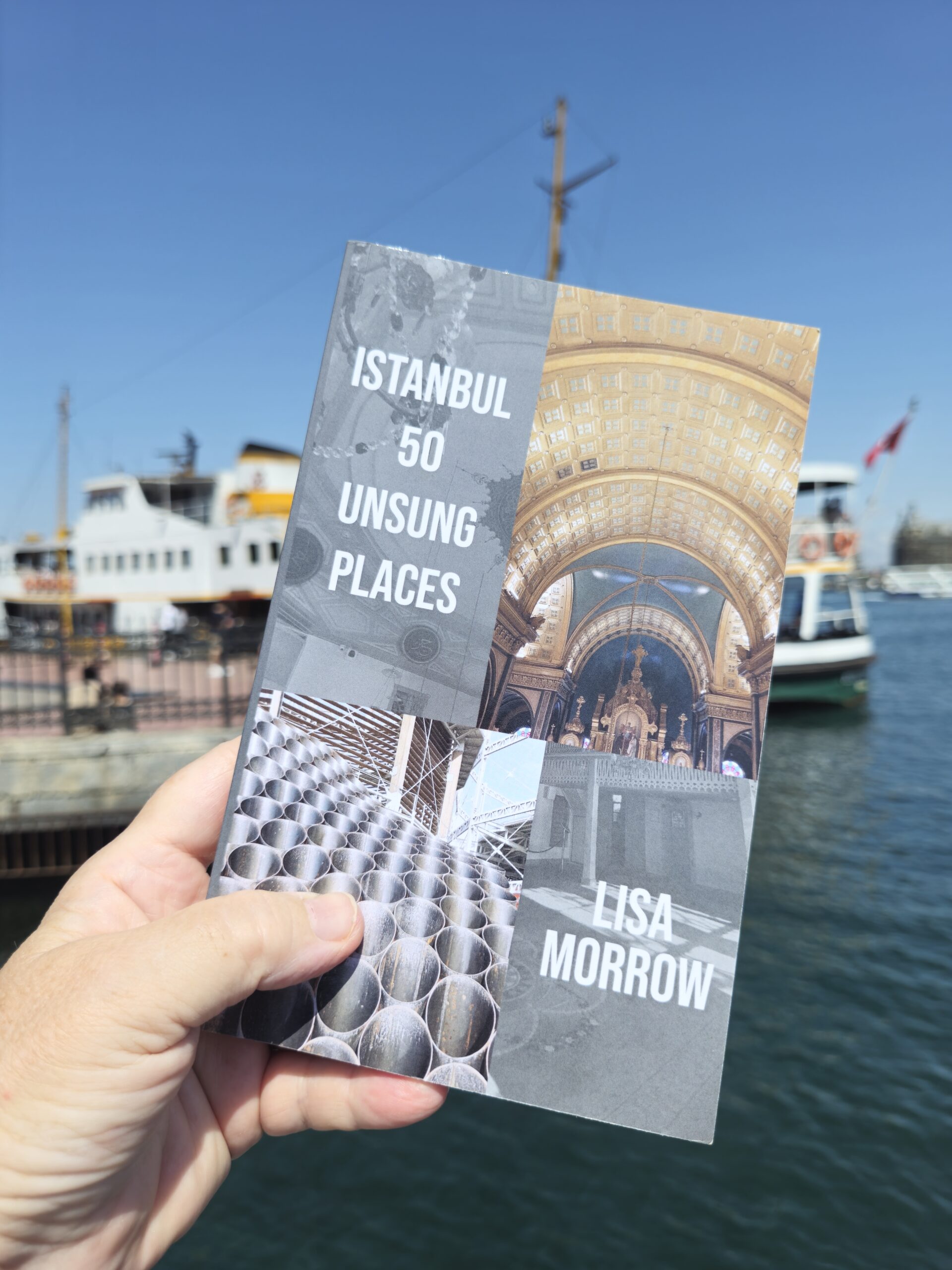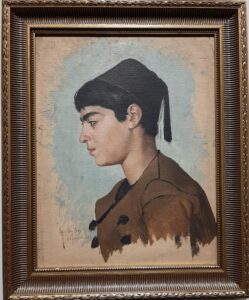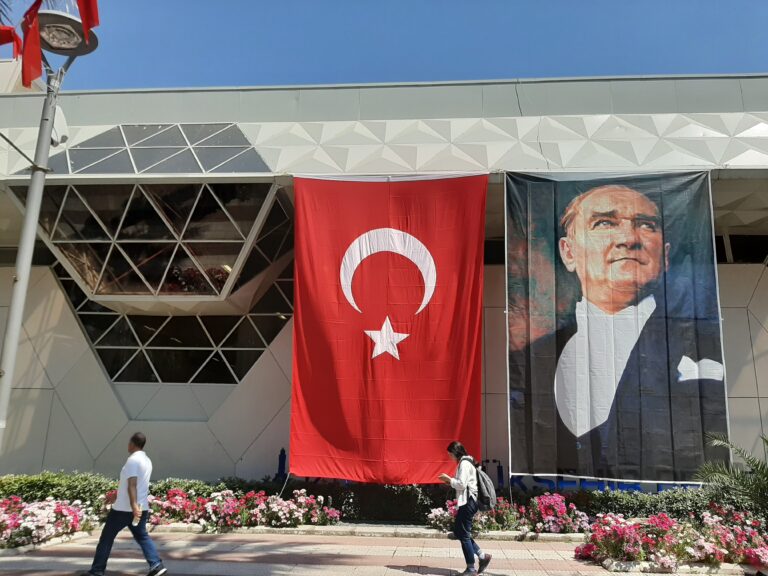Osman Hamdi Bey – Jack of all trades, master of all
Istanbul has long been known for its historical collections of art and antiques, such as the overwhelming wealth of jewels in Topkapı Sarayı and the priceless Hereke silk carpets in Dolmabahçe Palace whose gigantic crystal chandeliers reflect the waves of the Bosphorus from outside. Elsewhere the hills of the city are dotted with the former palaces and architectural follies of the Ottoman sultans, crammed with lush furnishings and exquisitely delicate trinkets of the past.
Yet in the last decade or so Istanbul has also become home to numerous modern art galleries, both big and small. From the Foucauldian inspired fortress of the Istanbul Modern, to the mansion formerly home to the Sakip Sabanci family that now houses a formidable permanent collection, there is something for most tastes.
My favourite is the Pera Museum. Located on Meşrutiyet Caddesi, I remember when this street was lined with grimy unloved buildings, largely over-run by poverty and neglect. These days the grandeur of this area formerly known as Pera in reference to the European population who lived here in the mid-19th century, has been brought back to life in the beautifully restored commercial buildings, many of which have been converted into upmarket hotels.
The most well-known of these is the Pera Palace Hotel which did start life as a hotel. It was once frequented by Agatha Christie and her ilk, and remains famous for Room 101 where Atatὒrk stayed when he was in town. The Pera Museum is just up the road and on the opposite side of the same street. The museum has a marvellous ever-changing roster of exhibitions from artists as diverse as Frieda Kahlo, Alberto Giacometti and Andy Warhol, to name a few. In addition, it contains the Suna and Inan Kıraç Foundation’s Orientalist Painting Collection, which includes the works of Osman Hamdi Bey.
I can imagine that the multi-talented Osman Hamdi Bey would have been much admired by Agatha Christie and Mustafa Kemal Atatὒrk, given the way he used both his creative talents as well as his analytical mind. Originally destined for a career in law, first studying in Istanbul and then in Paris, Osman Hamdi Bey succumbed to the lure of the French Orientalist painters, studying art and archaeology while mixing with Young Ottomans in the French capital.
Despite a strong desire to stay in Europe and pursue a career in the arts he remained true to his roots as the son of a loyal Ottoman Grand Vizier and on his return to Turkey took up numerous high level posts in the Ottoman administration.
Amongst his many achievements Osman Hamdi Bey was instrumental in establishing the guidelines which enabled the development of the art world in Turkey and ensured the protection of important artefacts. As an archaeologist, Osman Hamdi Bey supervised important digs such as the Commagene tombs on Nemrut Dağı and many others. He initiated the building of the Archaeological Museum that still holds many of the items he helped to find.
In his role as director of the Imperial Museum he drafted laws that to this day stop Turkish antiquities from being smuggled out of the country. In addition he instituted formal studies in art which resulted in the founding of the Mimar Sinan University of Fine Arts. He is also considered the pioneer of the museum curator’s profession in Turkey.
These days Osman Hamdi Bey is most famous for his 1906 painting The Tortoise Trainer. It broke Turkish art world records in 2004 when it was sold for three and a half million dollars. Much has been written about the meaning of this painting, and it is still the subject of much debate in Turkish universities. What we see is a figure, believed to be based on the artist himself, dressed as a dervish standing in an elaborately detailed room, peering down at tortoises slowly crawling across the floor.
Osman Hamdi Bey routinely painted figures in his works, situated in traditional Ottoman settings. Consequently, on the surface The Tortoise Trainer appears as a poetic rendition of Ottoman life, incorporating the quirky fact tortoises were used in the palaces for illumination by having candles attached to their shells. However some critics argue this work contains a sarcastic message. Osman Hamdi Bey is believed to have cast himself in the role of a teacher, enlightened by the West, attempting to train the Ottoman population, as symbolised by the tortoises, who resisted attempts to make them change.
In 2023 the new Istanbul Painting and Sculpture Museum opened up in the Galataport complex, with a whole section dedicated to Osman Hamdi Bey. It documents his life and includes a range of paintings from his youth, right through to the height of his fame. There are personal portraits of his son as well as commissioned pieces.
Predominantly known today for his paintings, Osman Hamdi Bey was so much more than a painter. He was one of many great men alive in Turkey at the end of the 19th and early 20th centuries who made important contributions to the state, which would carry on into the new Turkish republic.
******************************

If you’ve enjoyed this post, dive deeper into Istanbul with my guidebook taking you to lesser known sights in the city. Istanbul 50 Unsung Places includes everything you need to know about fifty places on both sides of Istanbul, including their history, opening hours and details on how to reach them using public transport.










It is my honor to work in the institution founded by Osman Hamdi Bey as Mekteb-i Sanayi-i Nefise-i Şâhâne. However, I can work there only because it had to be expanded into a university, with a school of arts and letters, by order of YÖK, itself created as a result of the military coup of September 12, 1980. Concerning the Tortoise Trainer, have you seen the suggestion that the trainer stands for *unenlightened* religious teachers, as suggested by the window’s being so low that the trainer cannot see the sky?
Thank you for your very informative comment. It is heartening that something positive came out of the military coup in 1980. I wasn’t aware of the suggestion you make about the meaning of the window placement. That’s very interesting.